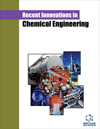
Full text loading...
We use cookies to track usage and preferences.I Understand
The possibility of regulating the curing rate and the complex of adhesive, deformation-strength and dynamic mechanical properties of polymers based on bisphenol A dithioester (thiirane) using a mixture of amine hardeners of various chemical nature is investigated.
Diethylenetriamine, diethylenetriaminomethylphenol and aminopolyamide were investigated as hardeners. The ratio of the components of the mixed hardener is selected, which provides the best combination of strength properties.
It was found that the rate of adhesion and cohesive strength at the initial stage (during the first hour) of curing compositions containing a mixture hardener significantly exceeds compositions cured by individual components of the mixture.
The results of measuring the dynamic mechanical characteristics of the studied polymers indicate that the dynamic modulus of elasticity, measured at temperatures below and above the transition from a glassy state to a high elastic one, for a sample containing a mixed hardener has an intermediate value between the values characteristic of samples containing individual components of a mixed hardener.

Article metrics loading...

Full text loading...
References


Data & Media loading...

